5 Famous Seaside Towns, Then and Now
The Covid-19 pandemic has certainly made planning summer holidays and days out difficult. But when restrictions ease, you’ll no doubt be more than ready for some fun in the great outdoors - and perhaps your thoughts will turn to trips to the seaside. Whether to enjoy some sunbathing and a paddle or to get active with beach sports and swimming, there’s plenty to keep you busy at the British riviera and it's nice to finally enjoy a day out where you don't have to keep your waterproof jacket handy.
As a nation, our love of all things seaside stretches back a long time. To explore our collective passion for surf and sand, we’ve taken a look at five famous coastal towns, comparing what they were like approximately a century ago with what you can expect if you visit them now.
Blackpool
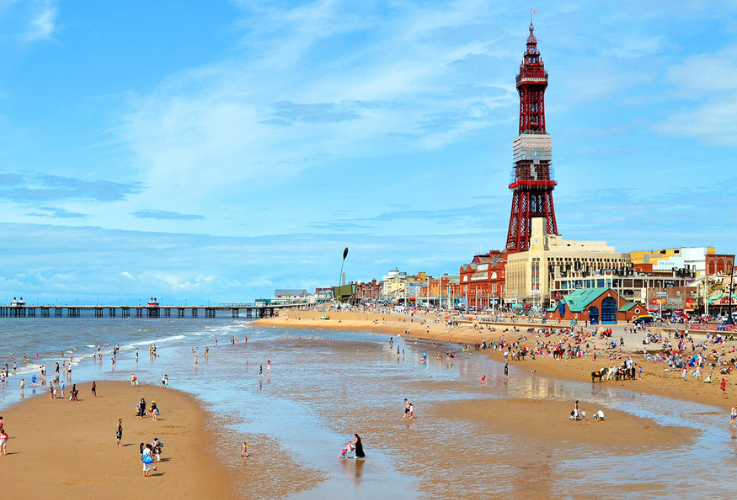
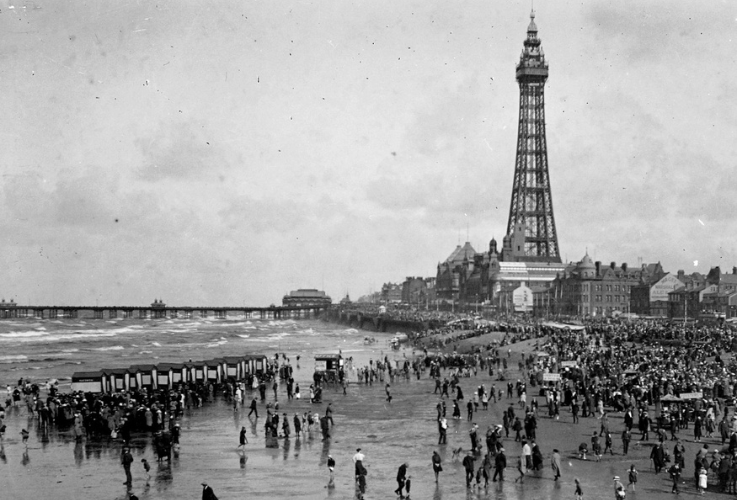
Then:
Described as ‘the great roaring spangled beast’ in J.B. Priestley’s 1934 travel book English Journey, Blackpool was one of the most popular British seaside resorts in the early 20th century. Attracting more than 10 million visitors a year, it boasted three piers, The Winter Gardens and of course the iconic Blackpool Tower - which itself was home to a variety of attractions, including a monkey house, aquarium and roof gardens. There was also the Pleasure Beach, which opened in 1896 and featured a giant Ferris wheel measuring 67 metres high.
Blackpool Illuminations were another huge draw, with the tradition dating back as far as 1879. Coming at a time when most people were still lighting their homes with candles, this electric lighting display was dubbed ‘artificial sunshine’ by awe-struck onlookers.
Now:
Many of the original features that made Blackpool such a hit with holidaymakers in the late 19th and early 20th centuries remain, but there have been major changes to this coastal resort over recent years. The seafront has been widened and the tram service upgraded, and giant dune grass sculptures now line the beachfront. The Tower has seen significant investments too. New features include a dungeon and 4D cinema.
Then of course there’s the Golden Mile to enjoy, as well the three piers. From the North Pier Theatre, to Madame Tussauds and SEA LIFE Blackpool on the Central Pier, there’s lots to keep you busy.
Portobello
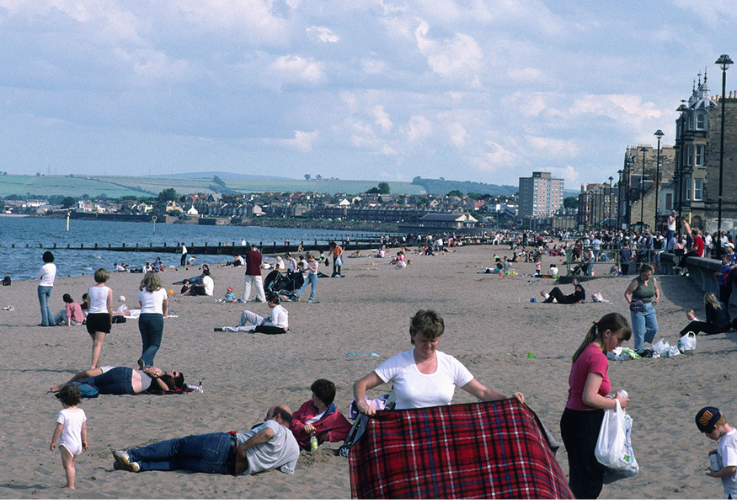
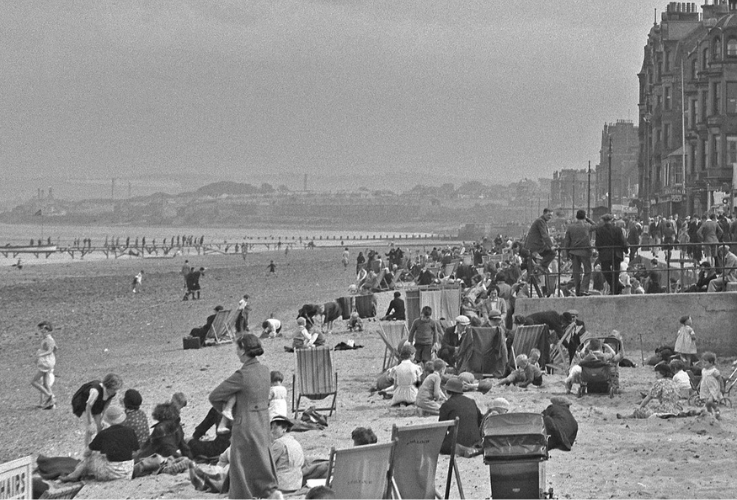
Then:
With its sandy beach and smart 381-metre-long promenade, Portobello had its heyday as a holiday resort in the late 19th and early 20th centuries. Being a suburb of Edinburgh, it was especially popular with day-trippers from the Scottish capital. Visitors could enjoy amusement arcades, bandstand performances, donkey rides and much more. For those after complete relaxation, deck chairs could be hired on the sand.
Just a few years after this photograph was taken, a large open-air swimming pool was opened. The largest facility of its kind in Europe at the time, it even featured a wave machine.
Now:
The open-air swimming pool may have closed, but Portobello beach is still a hit with locals and visitors alike, especially in summer. As well as people looking to unwind on the sands or take a dip in the sea, it’s a popular spot for various sports. Volleyball competitions and other events take place regularly, and the sandy beach is perfect for launching kayaks and sailing boats. Regattas attract competitors from across Scotland. It’s also common to see people venturing out in community-owned open water rowing boats.
If you’re in the area on the last Saturday of August, you can experience Portobello’s Big Beach Busk. This annual event takes place in the afternoon, and anyone can join in.
Morecambe
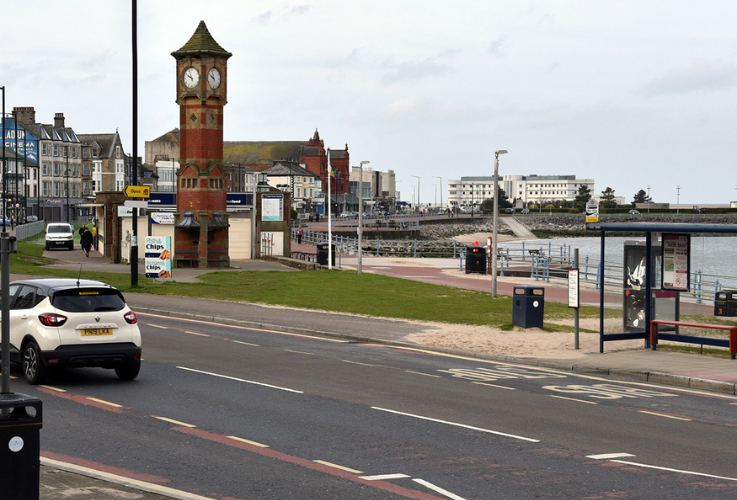
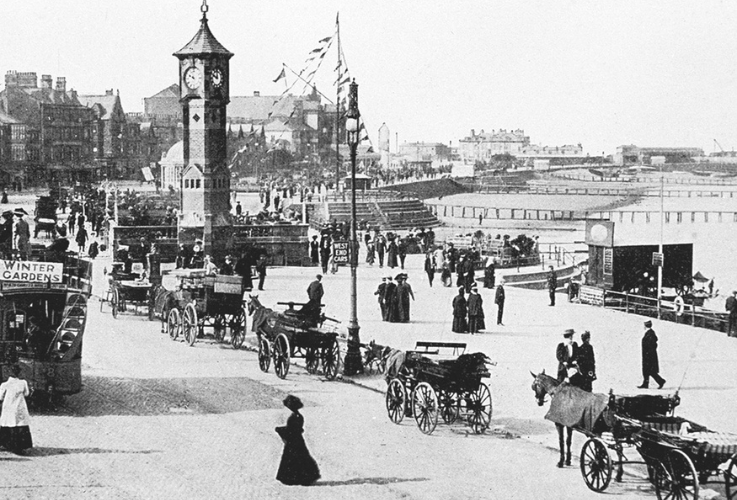
Then:
Growing around the small village of Poulton-le-Sands in the mid-19th century as train travel made it much quicker and easier for people from nearby cities to access the coast, Morecambe quickly established itself as a popular seaside resort. Famed for its impressive promenade, it was also home to The Winter Gardens. Overlooking the bay, this stunning Victorian building featured a large auditorium and hosted plays, operas and even the occasional Hollywood star. It also featured several bars, a ballroom and an aquarium.
With a seafront stretching for miles, Morecambe was an ideal spot for visitors from far and wide to enjoy some sun, sand and sea air.
Now:
Morecambe Promenade has been extensively refurbished over recent years, ensuring it’s still a great spot for a seafront stroll. Look out for the Eric Morecambe statue, a must-see for anyone visiting the area. You might find people queuing to take a snap with this statue against the idyllic backdrop of the Lake District hills. On a sunny day, it’s hard to resist the golden sands of the beach below, while for some family fun, it has to be Happy Mount Park - complete with its Splash Park, play area and ornamental gardens.
The Winter Gardens also still stand proudly on the seafront. This recently restored Grade II listed building plays host to a variety of events, from theatre shows, to concerts, to art exhibitions.
Brighton
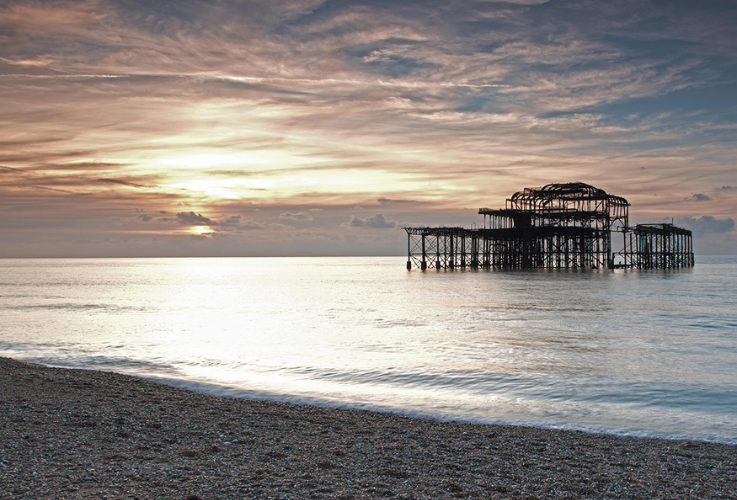
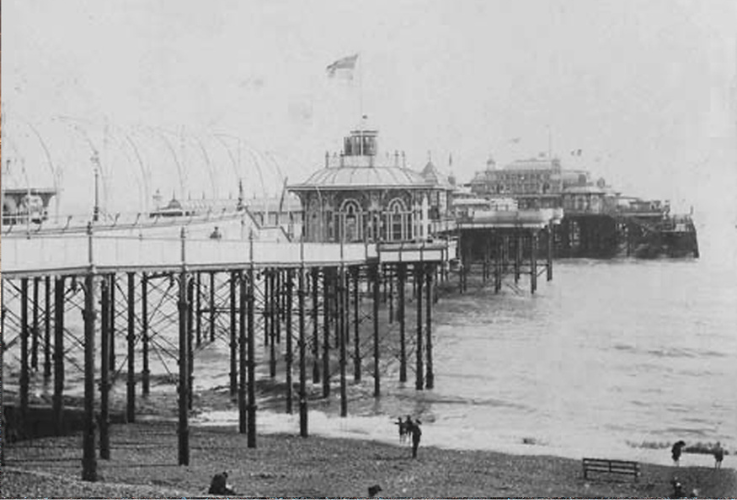
Then:
From the mid-18th century, visitors started travelling to Brighton in search of seawater cures for a plethora of health problems - with patients advised not only to swim in the salt water, but even to drink it. By the mid-19th century, the railway link to London made this coastal spot popular among holidaymakers too. The West Pier opened in 1866 and eventually housed a large pavilion and a concert hall. Another major attraction was Brighton Aquarium, which opened its doors in 1872. As well as showcasing a host of marine life, it boasted a roof terrace, roller skating rink and music conservatory.
Visitors to the resort also enjoyed everything from acrobatic displays to picnics on the pebbles, and Brighton Swimming Club put on regular diving displays, races and polo matches. Source - Traditional West Pier Brighton: Rennart
Now:
The West Pier shut down in 1975 and was then destroyed in a fire in 2003. Its remains are still a draw for tourists though, with the charred frame providing an atmospheric backdrop to the beach. The aquarium, now called SEA LIFE Brighton, is still there and is in fact the world’s oldest operating aquarium. Recently refurbished, it houses the country’s largest collection of sharks and rays.
For jaw-dropping views over the South Downs, Brighton and the Channel, take a trip up British Airways i360. This 150-metre-high observation tower now dominates the skyline and makes for an unforgettable experience. If you want even more sweeping vistas, you can arrange to take a helicopter ride over the area.
Llandudno
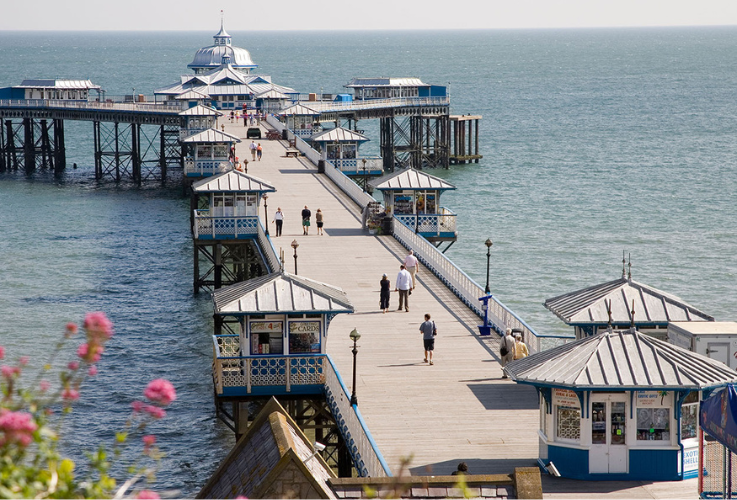
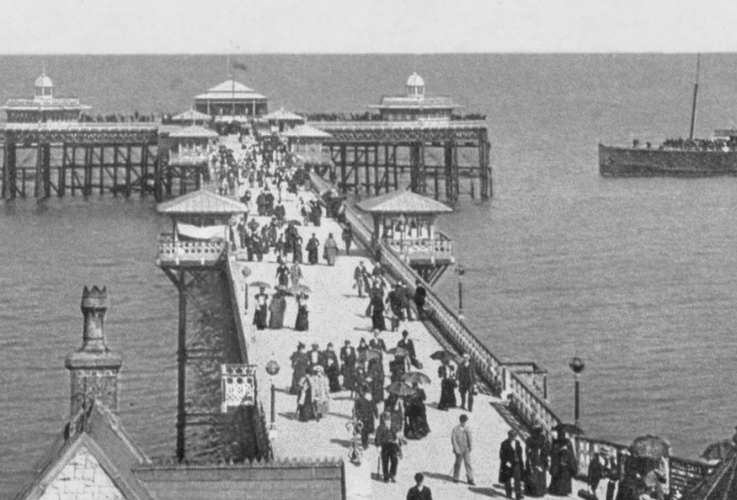
Then:
Set in a former fishing and copper-mining region, Llandudno really took off as a tourist destination in the second half of the 19th century thanks to the development of the railroad. Nestled between the limestone headlands of the Great Orme and Little Orme, this seaside town was renowned for its stunning natural scenery and elegant Victorian architecture.
Completed in 1878, its pier was the defining feature of the resort. Measuring an impressive 1,200 feet, it was the longest pier in Wales. The grand Pier Pavilion opened shortly afterwards and was famed for its musical concerts, which attracted visitors from far and wide.Tourists also enjoyed classic seaside pastimes including everything from Punch and Judy shows to walks along the two sheltered beaches.
Now:
Llandudno has lost none of its Victorian grandeur. A stroll along the pier complete with its array of shops and cafes can feel like you’re stepping back in time. You can even still catch a Punch and Judy show, or perhaps you’d like to enjoy an ice cream or take a donkey ride along the sand. Listen out for music from the bandstand, and if you’re visiting with kids, there’s a play area and paddling pool to keep little ones entertained. There are funfair rides too, as well as amusement arcades.If you fancy testing out your sea legs, you can book a sightseeing boat trip to the Great and Little Ormes, or if you’re after something to get your adrenaline pumping, you can head out on a speedboat trip.
Want a chance to catch your own supper? There’s a fishing platform on the Pier Landing Stage and day permits are available from the café at Pier Head.
Britain’s seaside resorts have seen many changes over the years - and they might now have to compete with coastal spots abroad - but the allure of sunshine, sand and surf remains strong - and it’s not hard to see why.
